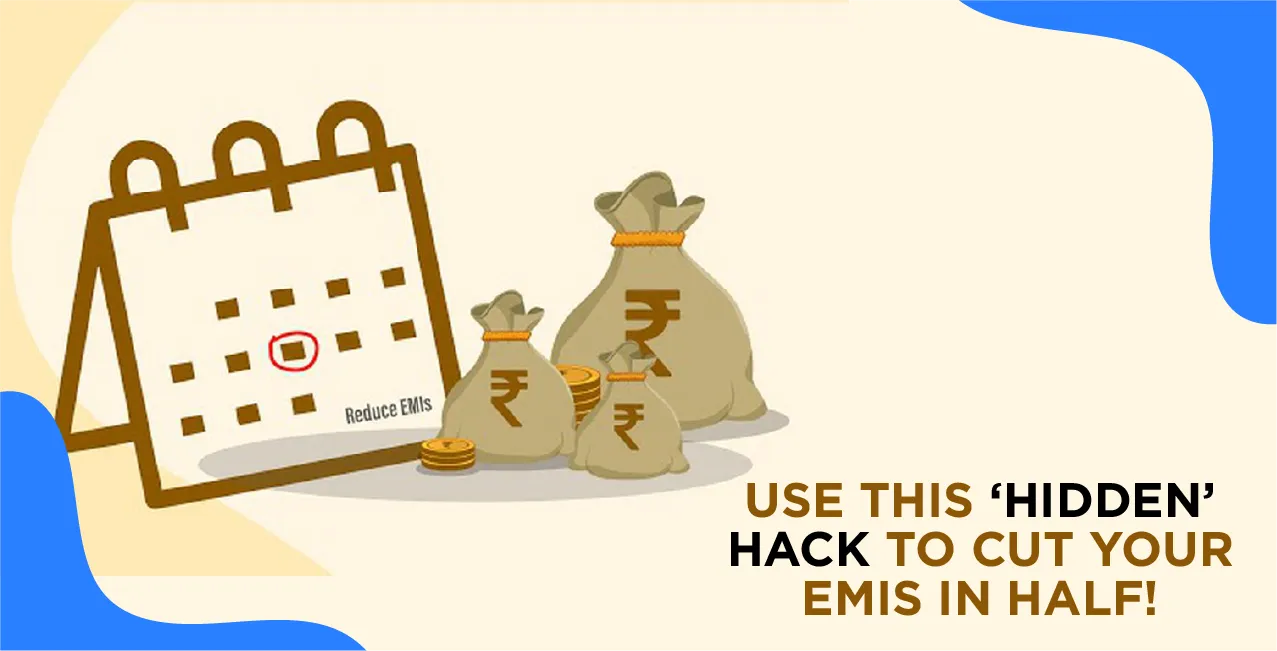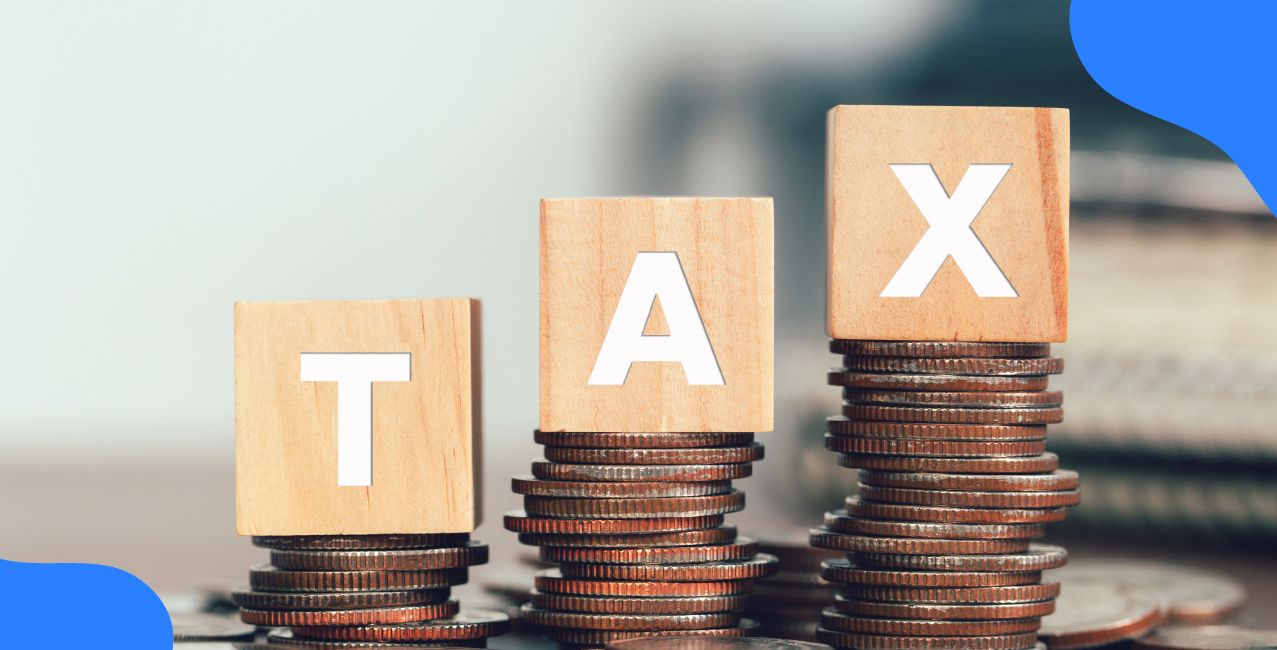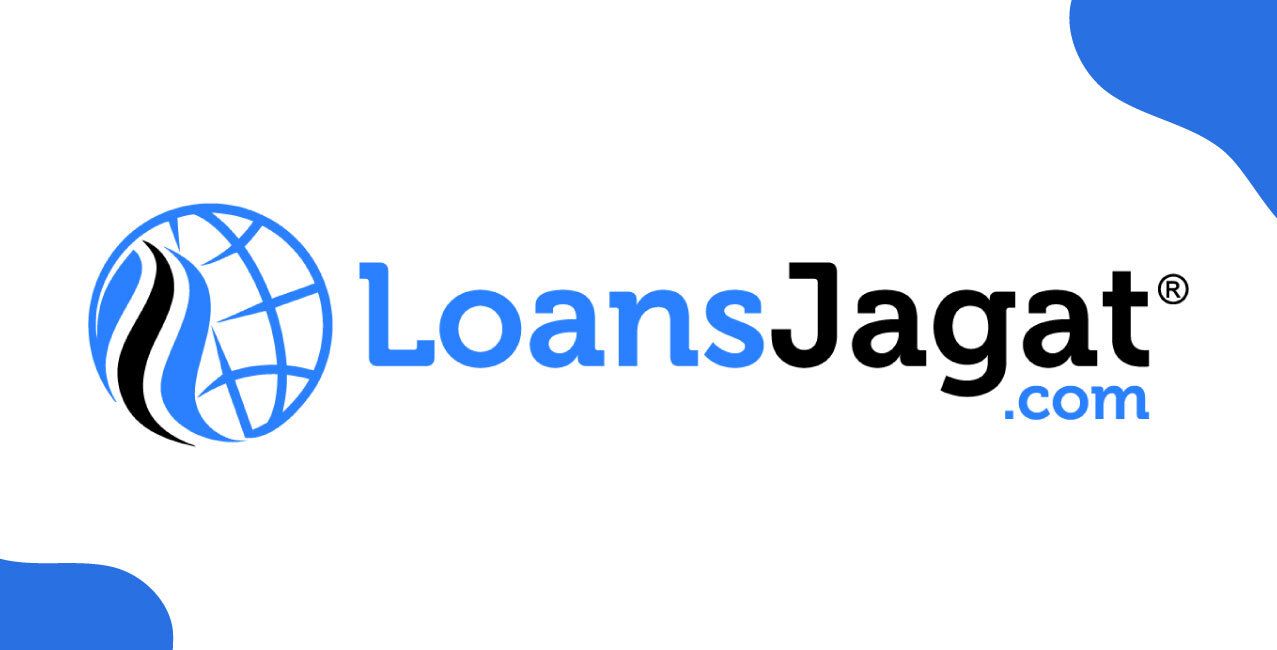
Author
LoansJagat Team
Read Time
8 Minute
24 Feb 2025
Use This ‘Hidden’ Hack to Half Your EMIs! Essential 2025 Guide
Every month, Arjun dreads the first week; it’s EMI time. His home, car, and personal loans comprise a big part of his salary. He wonders why his friend, who has a similar loan amount, pays much less monthly.
The answer is simple: his friend used a hidden EMI hack that Arjun never knew about.
If you feel like your EMIs are taking up too much of your monthly budget, you’re not alone. According to recent data, India's average home loan interest rates start from 8.30% p.a., depending on the lender and applicant's credit profile. This can indeed result in a substantial financial burden for many borrowers.
But what if you could cut your EMIs in half without unnecessarily defaulting on your payments or extending your loan tenure?
Let’s understand how this works and how to apply it to your loans today.
Understanding EMIs and Why They Can Be a Burden
Before we reveal the best way to reduce EMIs, let’s first understand how EMIs work and why they feel like a financial burden.
An Equated Monthly Installment (EMI) is the fixed monthly amount you pay for your loan.
This EMI has two parts: the principal (the actual amount borrowed) and the interest (the extra amount the bank charges for lending you money). The EMI amount depends on the loan, interest rate, and tenure.
Here is a comparison of two different loan tenures:
Loan Tenure | Loan Amount (₹) | Interest Rate (%) | EMI (₹) | Total Interest Paid (₹) |
10 Years | 50,00,000 | 8% | 60,663 | 22,79,560 |
20 Years | 50,00,000 | 8% | 41,822 | 50,37,280 |
This shows that while a longer tenure gives a lower EMI, you pay much more interest over time. Many people don’t realise this and focus only on making their EMIs affordable without considering the total amount they will pay.
This is why high EMIs can be a problem, as they reduce your monthly savings, increase financial stress, and affect your eligibility for future loans.
The good news is that there is a hidden way to reduce your EMI legally and smartly, and many people are already using this method.
The Hidden Hack to Cut Your EMIs in Half
The best way to reduce your EMI without defaulting is by using loan refinancing or a balance transfer. Many borrowers don’t know that they are not stuck with the same bank or the same interest rate forever.
If you have been paying your EMI for a few years, there’s a good chance that market interest rates have dropped or other banks offer better deals.
A loan balance transfer allows you to shift your loan to another lender who offers a lower interest rate. This directly reduces your EMI and can save you lakhs over the loan tenure.
- For example, assume you took a home loan of ₹50 lakh at 8% interest for 20 years. Your monthly EMI would be ₹41,822.
Now, if a different bank offers you a lower interest rate of 6.5%, and you transfer your loan, your new EMI will be ₹37,502 per month. This means a monthly saving of ₹4,320 and a total savings of ₹10,36,800 over 20 years!
- Another example is Rakesh, who had a personal loan of ₹10 lakh at 14% interest for 5 years. His EMI was ₹23,307 per month. He transferred his loan to another bank that offered him 10% interest.
After refinancing, his new EMI became ₹21,247, saving him ₹2,060 per month. Over five years, this simple move saved him ₹1,23,600.
Many banks don’t tell their customers about this trick because they profit from high-interest loans. They know that most people don’t actively compare rates or switch banks, even when better offers are available.
Read More – Best Strategies to Reduce Your Loan EMI in 2025
But in reality, switching your loan is quick, easy, and hassle-free. Let’s look at how you can do it.
How a Lower Interest Rate Reduces Your EMI
Many people don’t realise how much they can save by reducing their loan’s interest rate. The difference in EMI might seem small, but the savings are huge over time. Here’s a comparison of EMI payments based on different interest rates for a ₹50 lakh home loan with a 20-year tenure.
Interest Rate (%) | EMI (₹ per month) | Total Interest Paid (₹) | Total Loan Cost (₹) |
8% | 41,822 | 50,37,280 | 1,00,37,280 |
7.50% | 40,280 | 46,67,091 | 96,67,091 |
7% | 38,765 | 43,03,686 | 93,03,686 |
6.50% | 37,275 | 39,46,042 | 89,46,042 |
6% | 35,811 | 35,94,129 | 85,94,129 |
From the table, just a 1% reduction in interest rate (from 8% to 7%) saves ₹7.3 lakh in total loan cost. Imagine saving even more with a balance transfer or a lower negotiated rate!
By refinancing at a lower interest rate, you can cut your EMI and total loan costs hugely. Don’t wait for your bank to offer you a lower rate; take action and compare other lenders now!
How Increasing Income Can Indirectly Reduce Your EMI Burden?
While most people focus on reducing EMIs by adjusting their loan terms, increasing your disposable income is another smart way to reduce the burden.
When you earn more, you can manage EMIs better, make prepayments, and even reduce your overall interest cost.
Here’s how:
- Take Up a Side Income Stream: Freelancing, tutoring, or consulting in your area of expertise can bring in extra income to prepay your loan. Even an additional ₹10,000 per month can make a big difference over time.
- Invest in Fixed Returns: Investing in Fixed Deposits (FDs), Mutual Funds, or Recurring Deposits (RDs) can help generate returns that offset EMI payments. For example, investing ₹5 lakh in an FD at 7% annual interest can generate ₹35,000 per year, which can be used for prepayments.
- Rent Out Unused Property or Assets: If you have a spare room, commercial space, or even a vehicle, renting it out can bring passive income. A simple ₹15,000 rental income can reduce your EMI burden.
By increasing your income, you not only make EMI payments easier but also reduce your loan’s overall interest cost. Even small additional payments toward the principal can save lakhs in the long run.
Other Smart Ways to Reduce Your EMI Burden
Cutting down your EMI doesn’t always mean refinancing your loan. Several other strategies can help you reduce your monthly loan payments and save money in the long run.
Here are some of the best ways to lower your EMI burden.
1. Increase Your Credit Score
Your credit score plays a huge role in determining your loan interest rate. A high credit score means you are a low-risk borrower, which makes banks and financial institutions offer you better interest rates. If your credit score exceeds 750, you can secure loans at lower interest rates.
Always pay your EMIs and credit card bills on time to improve your credit score. Even a single missed payment can bring your score down. Also, keep your credit utilisation ratio below 30%.
If you have a credit limit of ₹1 lakh, do not spend more than ₹30,000 on your credit card. Avoid applying for too many loans or credit cards quickly, as this can reduce your credit score. If you already have a low score, consider repaying smaller debts first to boost your rating.
2. Opt for a Step-Down EMI Plan
A step-down EMI plan is an excellent option for lower payments over time. In this type of loan, the EMI amount is higher in the initial years and gradually reduces over time. This works best for borrowers who expect a future income decline or those nearing retirement.
For example, if you take a ₹10 lakh loan at 10% interest for 10 years, your EMI in the first few years could be ₹15,000 per month, but it will reduce to ₹10,000 per month in later years.
Loan Year | Outstanding Principal (₹) | EMI Amount (₹) | Interest Component (₹) | Principal Component (₹) |
1 - 2 | 10,00,000 | 15,000 | 8,500 | 6,500 |
3 - 4 | 7,50,000 | 13,000 | 6,000 | 7,000 |
5 - 6 | 5,00,000 | 12,000 | 4,000 | 8,000 |
7 - 8 | 3,00,000 | 11,000 | 2,500 | 8,500 |
9 - 10 | 1,50,000 | 10,000 | 1,000 | 9,000 |
Key Points:
- Higher EMIs at the start help repay the principal faster, reducing the overall interest burden.
- As the principal reduces, so do the EMIs, making it easier for borrowers later in the tenure.
- Mostly applicable for home and business loans with flexible EMI options offered by lenders.
This option is mostly available for home and business loans where lenders allow flexible EMI structures.
3. Use a Loan Overdraft Facility
A loan overdraft facility works like a credit limit on your existing loan. If you have extra money, you can deposit it into your overdraft account, reducing the outstanding principal. The lower principal means lower interest, which, in turn, lowers your EMI.
For example, suppose you have a home loan of ₹40 lakh at 7.5% interest for 20 years. Your EMI is ₹32,224 per month. If you put an extra ₹5 lakh into the overdraft account, your outstanding loan amount immediately reduces to ₹35 lakh. This means your EMI drops to around ₹28,000 per month, saving you ₹4,224 monthly.
Also Read - How to Cut Your EMI by 50% Through Smart Loan Consolidation Strategies
Many banks, including HDFC, ICICI, and SBI, offer this facility on home loans. The best part? You can withdraw the extra money anytime if you need it.
4. Consolidate Multiple Loans into One
If you have multiple loans—such as a home loan, car loan, and personal loan—managing multiple EMIs can be stressful. Consolidating them into a single loan with a lower interest rate can reduce your EMI burden.
For example, let’s say you have:
Loan Type | Loan Amount (₹) | Interest Rate (%) | EMI (₹) |
Home Loan | 25,00,000 | 8% | 21,000 |
Car Loan | 5,00,000 | 11% | 10,700 |
Personal Loan | 3,00,000 | 14% | 7,500 |
If you consolidate your loans into a single loan at an interest rate of 10.5%, your new EMI would be approximately ₹32,947 per month.
Previously, the combined EMI for the home, car, and personal loans was ₹39,200 per month. By consolidating the loans, you would save around ₹6,253 per month.
This method works best if you can find a lower interest rate lender. Many NBFCs and private banks provide loan consolidation services, helping borrowers simplify their finances.
Conclusion
Many borrowers believe they are stuck with their current EMI, but the truth is that banks are willing to offer better deals if you know how to ask for them.
If you’re struggling with high EMIs, take action today. Check your current interest rate, compare offers from other lenders, and see if a balance transfer or loan restructuring makes sense for you.
Even small steps, like increasing your credit score or making an extra payment, can help cut down your EMI burden.
FAQs
1. Is balance transfer always the best option to reduce EMIs?
A balance transfer is only helpful if the new interest rate is at least 1-2% lower than your current rate.
2. Can I transfer my home loan to another bank without extra charges?
It depends on your lender. Some banks waive processing fees, while others charge a prepayment penalty.
3. Does increasing tenure affect my credit score?
No, but it increases the total interest paid. A longer tenure means lower EMIs but a costlier loan.
4. What’s the ideal credit score for getting a lower EMI loan?
A credit score above 750 improves your chances of securing loans at lower interest rates.
5. Can I negotiate interest rates with my bank?
Yes, if you have a good repayment history and a high credit score, banks may reduce your rate.
6. Can a personal loan EMI be reduced after taking the loan?
Yes, you can reduce EMIs by making a part prepayment, opting for loan restructuring, or refinancing the loan.
About the Author

LoansJagat Team
‘Simplify Finance for Everyone.’ This is the common goal of our team, as we try to explain any topic with relatable examples. From personal to business finance, managing EMIs to becoming debt-free, we do extensive research on each and every parameter, so you don’t have to. Scroll up and have a look at what 15+ years of experience in the BFSI sector looks like.

Quick Apply Loan
Subscribe Now


